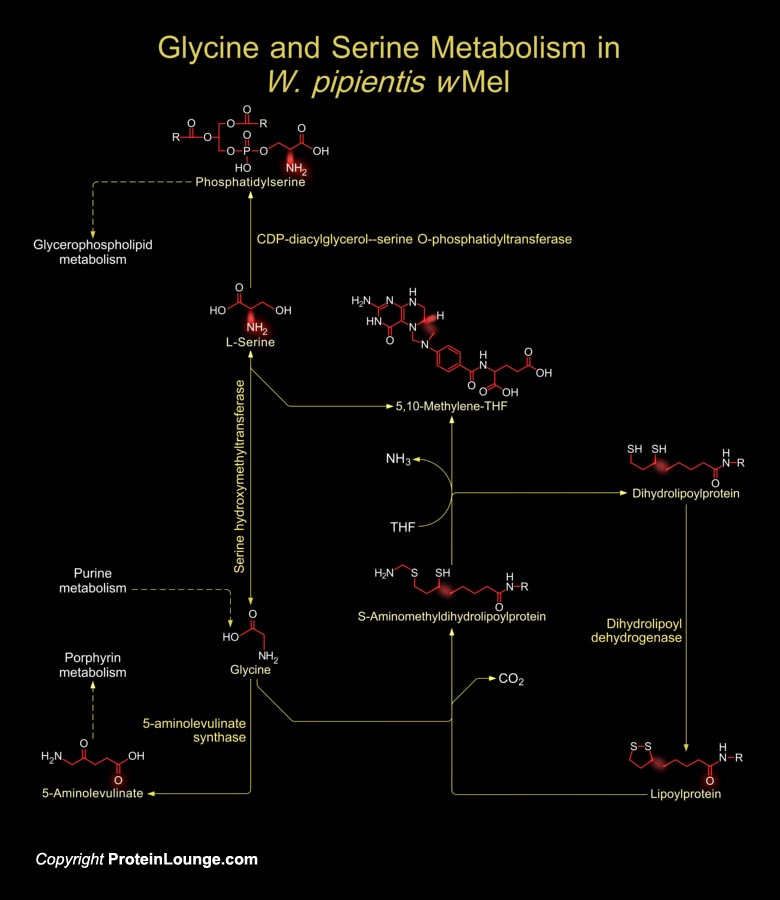
Wolbachia are intracellular Gram-negative bacteria found in association with a variety of invertebrate species, including Insects, Mites, Spiders, terrestrial Crustaceans, and Nematodes. Wolbachia are transovarialy transmitted from females to their offspring and are extremely widespread. Wolbachia sp. are members of the Rickettsiales order of the Alpha-subdivision of the Proteobacteria phyla and belong to the Anaplasmataceae family, with members of the genera Anaplasma, Ehrlichia, Cowdria, and Neorickettsia. Six major clades (A-F) of Wolbachia have been identified to date: A, B, E, and F have been reported from Insects, Arachnids, and Crustaceans; C and D from Filarial Nematodes (Ref.1). Wolbachia are of great interest due to their diverse interactions with different[..]
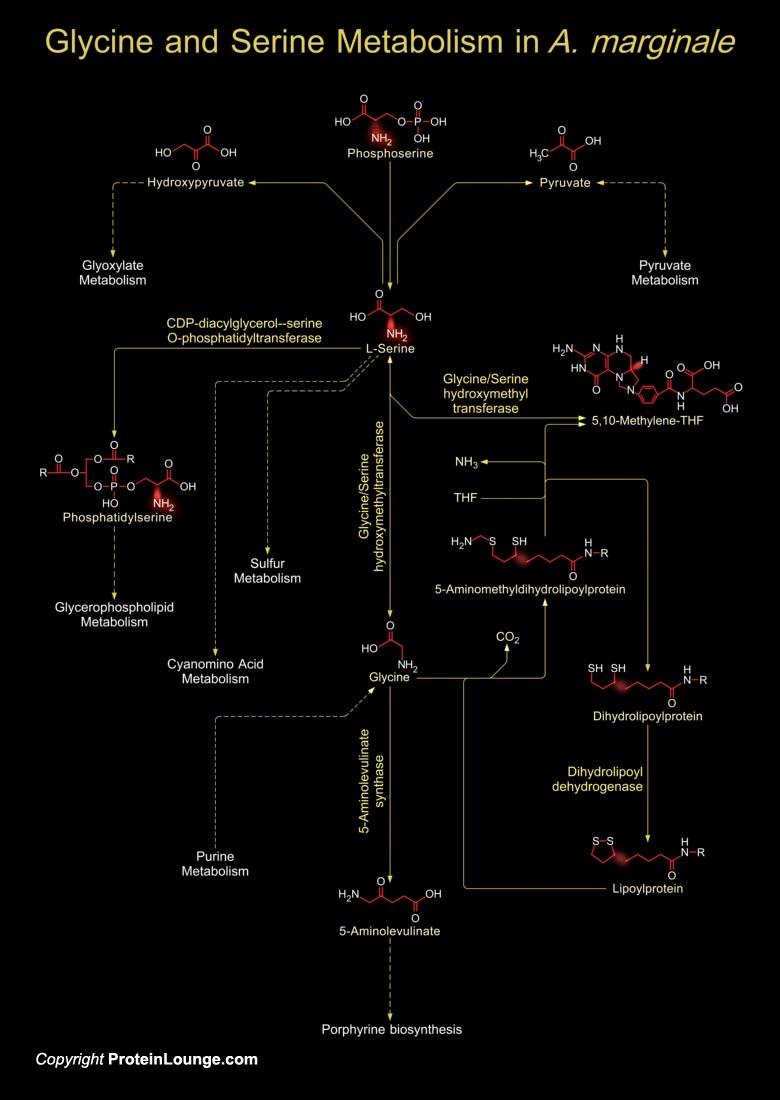
A. marginale (Anaplasma marginale) is an obligate intracellular Gram-negative bacterium. It is the most prevalent tick-borne pathogen of cattle worldwide and is endemic in tropical and subtropical regions of the world. A. marginale causes Anaplasmosis, an infectious blood disease which results in significant morbidity and mortality in cattle. A. marginale invades the red blood cells of the host animal and multiplies, causing their destruction. The presence of the parasite in the red blood cells stimulates the cattle's immune system to remove the affected cells from circulation and destroy them. This large scale destruction of red blood cells results in Anaemia, fever, weight loss, respiratory distress, abortion and often death. Although[..]
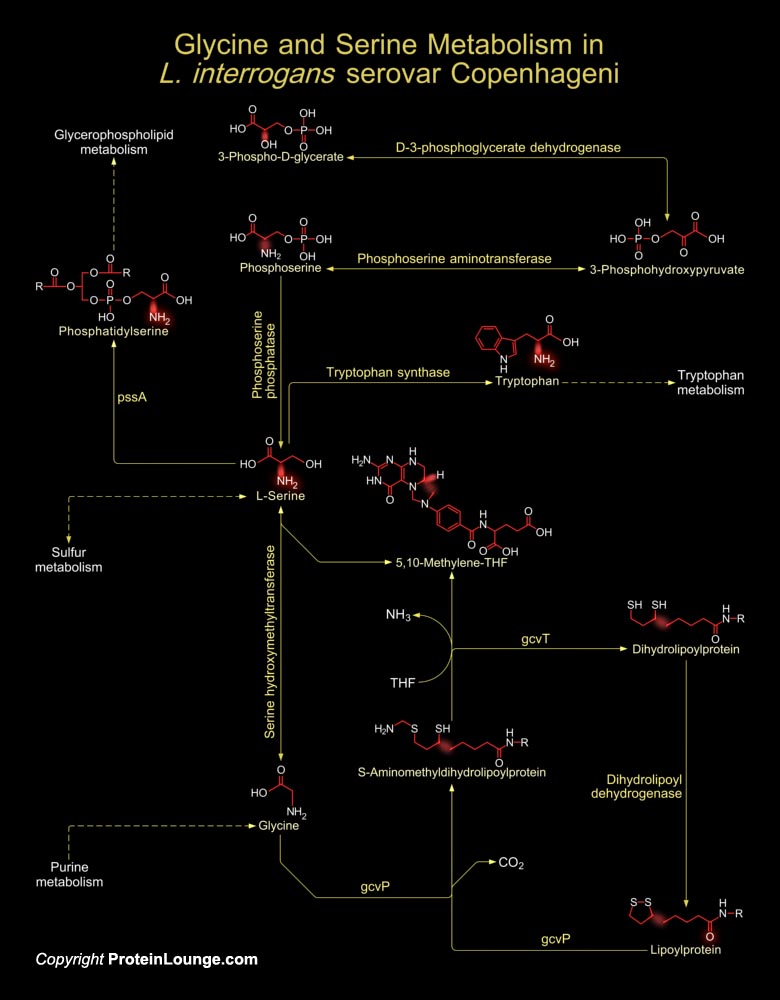
Leptospira is a genus of Spirochetal bacteria and the causative agent of Leptospirosis, a zoonotic disease of worldwide distribution and transmission to humans occurs through contact with domestic or wild animal reservoirs or an environment contaminated by their urine. Leptospira is a flexible, spiral-shaped, Gram-negative Spirochete with internal flagella. Leptospira enters the host through mucosa and broken skin, resulting in Bacteremia. The Spirochetes multiply in organs, most commonly the Central Nervous System, kidneys, liver and conjunctiva. Infective bacteria are shed in the urine. These organisms establish themselves a commensal relationship with many animal hosts, persisting in the renal tubules without producing disease or causing pathologic changes in the[..]
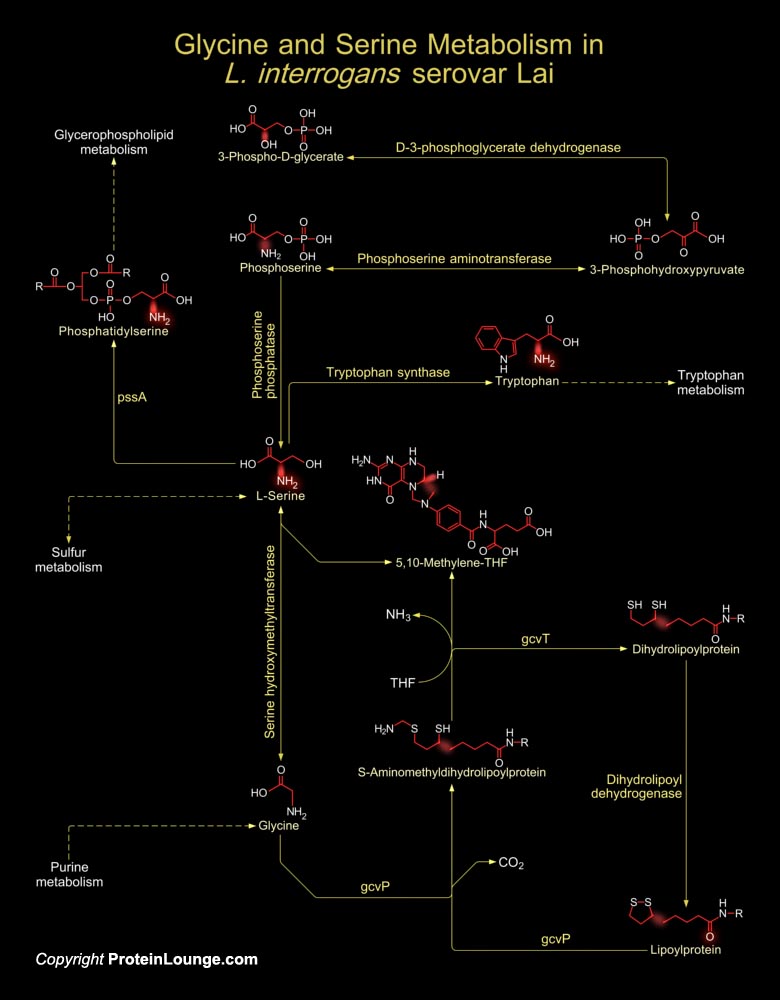
The genus Leptospira consists of a genetically heterogeneous group of pathogenic and saprophytic species belonging to the phylum Spirochaetales. It is the causative agent of Leptospirosis, a zoonotic disease of worldwide distribution and transmission to humans occurs through contact with domestic or wild animal reservoirs or an environment contaminated by their urine. Leptospira is a flexible, spiral-shaped, Gram-negative Spirochete with internal flagella. Leptospira enters the host through mucosa and broken skin, resulting in Bacteremia. The Spirochetes multiply in organs, most commonly the Central Nervous System, kidneys, liver and conjunctiva. Infective bacteria are shed in the urine. These organisms establish themselves a commensal relationship with many animal[..]
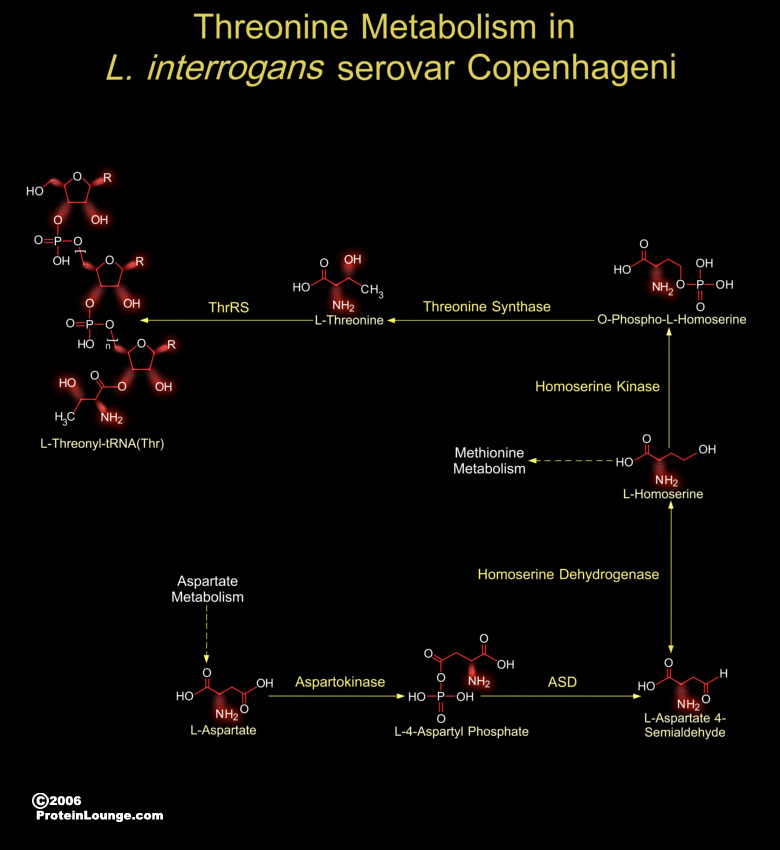
Leptospira is a genus of Spirochetal bacteria and the causative agent of Leptospirosis, a zoonotic disease of worldwide distribution and transmission to humans occurs through contact with domestic or wild animal reservoirs or an environment contaminated by their urine. Leptospira is a flexible, spiral-shaped, Gram-negative Spirochete with internal flagella. Leptospira enters the host through mucosa and broken skin, resulting in Bacteremia. The Spirochetes multiply in organs, most commonly the Central Nervous System, kidneys, liver and conjunctiva. Infective bacteria are shed in the urine. These organisms establish themselves a commensal relationship with many animal hosts, persisting in the renal tubules without producing disease or causing pathologic changes in the[..]
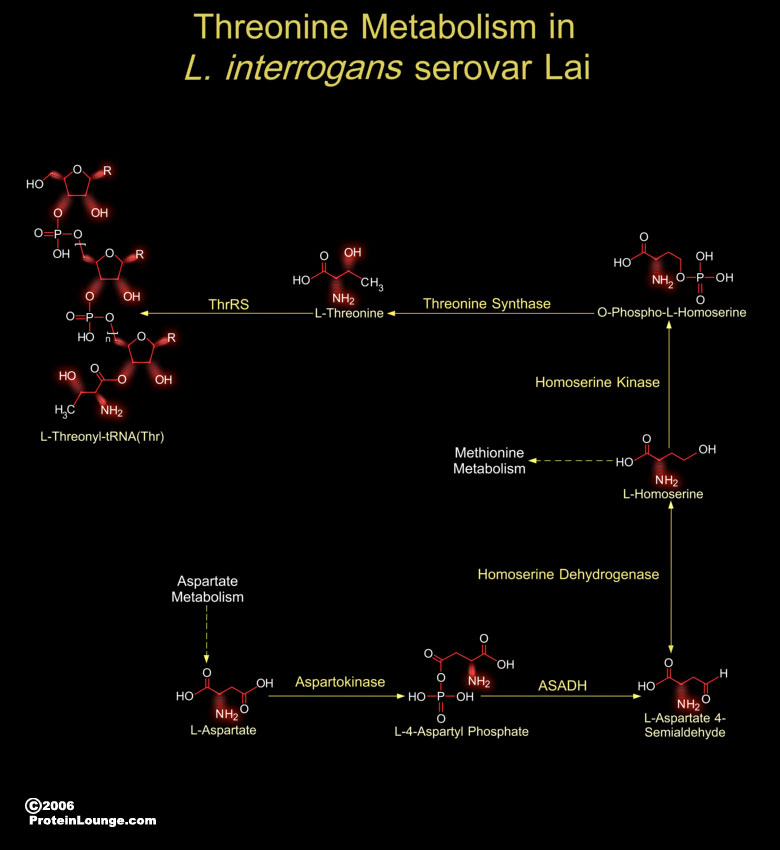
The genus Leptospira consists of a genetically heterogeneous group of pathogenic and saprophytic species belonging to the phylum Spirochaetales. It is the causative agent of Leptospirosis, a zoonotic disease of worldwide distribution and transmission to humans occurs through contact with domestic or wild animal reservoirs or an environment contaminated by their urine. Leptospira is a flexible, spiral-shaped, Gram-negative Spirochete with internal flagella. Leptospira enters the host through mucosa and broken skin, resulting in Bacteremia. The Spirochetes multiply in organs, most commonly the Central Nervous System, kidneys, liver and conjunctiva. Infective bacteria are shed in the urine. These organisms establish themselves a commensal relationship with many animal[..]
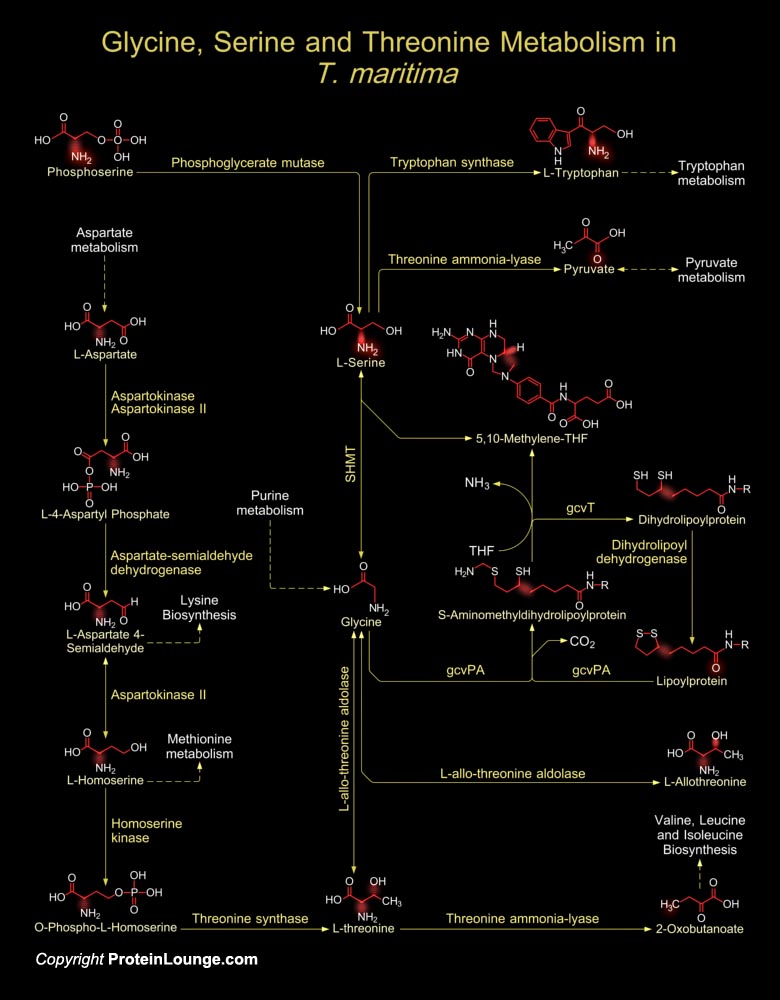
T. maritima (Thermotoga maritima), is an anerobic, Gram-negative, rod-shaped bacterium which usually grows singly or in pairs. The organism has an optimum growth temperature of 80 degrees centigrade. T. maritima metabolizes many simple and complex carbohydrates, keto-acids, etc. to fuels such as Hydrogen. The metabolism of amino acids like Glycine, Serine and Threonine acts as a source of carbon and energy for T. maritima by the conversion of amino acids to keto-acids and carbohydrates (Ref.1). The Glycine Cleavage System catalyzes the oxidative decarboxylation of Glycine in bacteria to supply one carbon units and generation of other vital amino acids like L-Serine and L-Threonine. The Glycine Cleavage reaction catalyzes the oxidative cleavage of Glycine to[..]
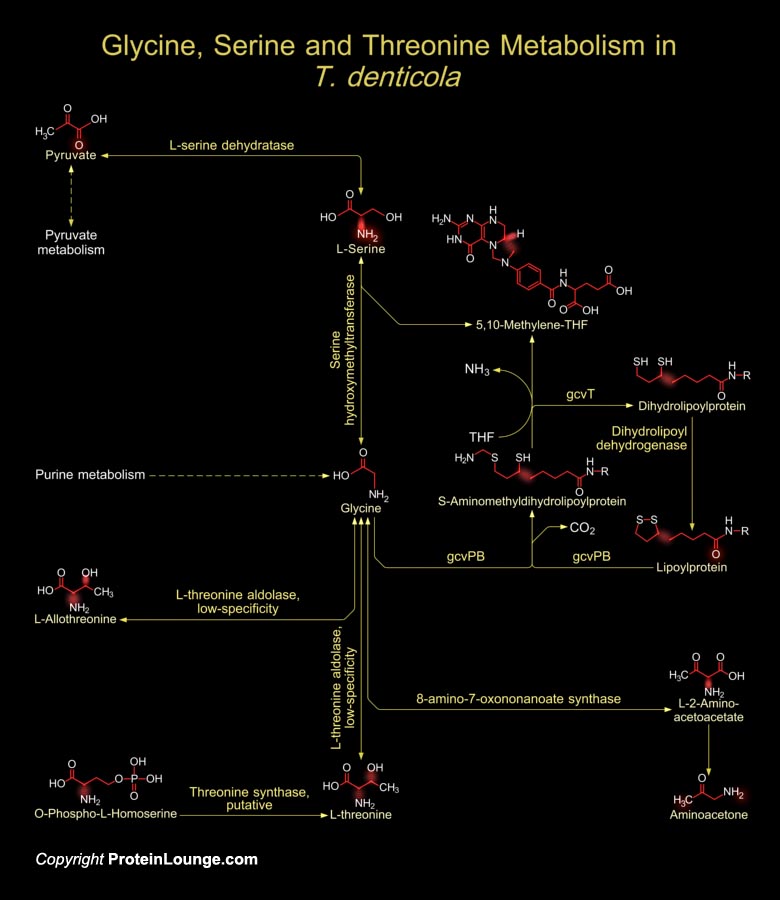
The Gram-negative oral spirochete T. denticola (Treponema denticola) is predominantly associated with the incidence and severity of human periodontal disease. T. denticola is an obligate anaerobe commonly associated with an inflammation of gum tissue that frequently precedes bone resorbtion and subsequent tooth loss of humans. T. denticola lacks a traditional LPS (Lipopolysaccharide), as do many other Spirochetes, for which these are resistant to cationic peptide antibiotics as well as to human Beta-Defensins, as these interact strongly with LPS due to its negative charge. Such a mechanism prompts T. denticola to thrive in gum tissue and affect substrate specificity and permit the utilization of amino acids and other compounds for substrate phosphorylation and ATP[..]
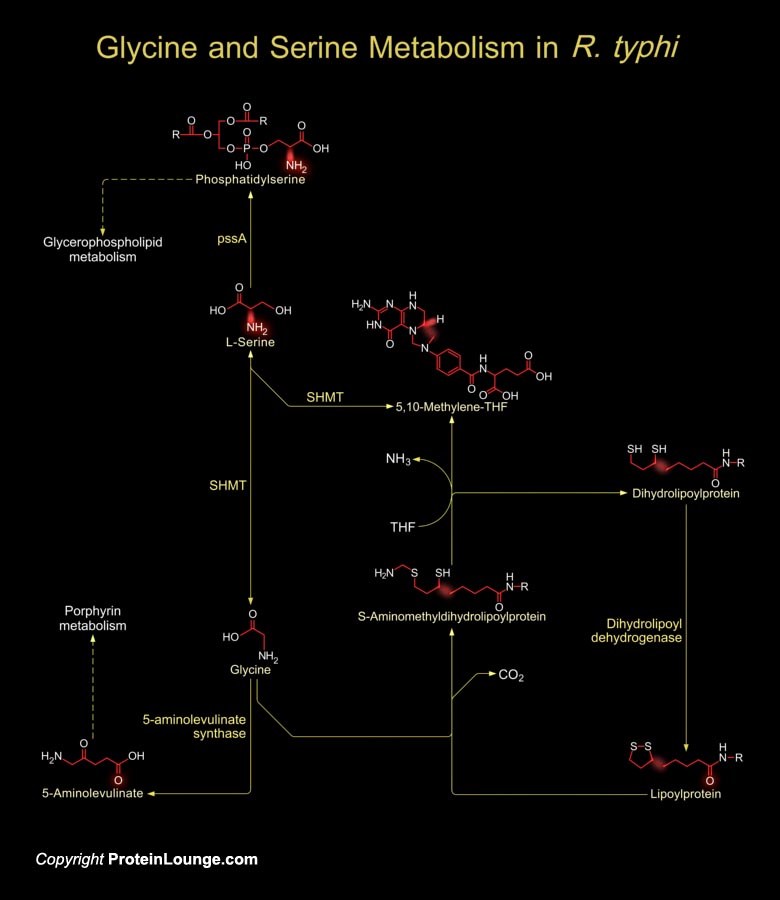
Rickettsial infections have played a significant role in the history of Western civilization through epidemic Typhus and Rickettsia used arthropod vector for the spread of Typhus fever. R. typhi (Rickettsia typhi) is a smaller in size than normal bacteria and obligately intracellular pathogen. However, they are true bacteria, small coccobacilli that are normally stained with Giemsa and poorly by the Gram stain. Its cell wall morphology is that of a Gram-negative bacillus. Phylogenetically a member of the Alpha-subgroup of Proteobacteria, R. typhi along with R. prowazekii (Rickettsia prowazekii) is considered to be Typhus group Rickettsia (Ref.1). R. typhi evolved in close association with its arthropod vectors, various species of fleas. In its best known zoonotic[..]
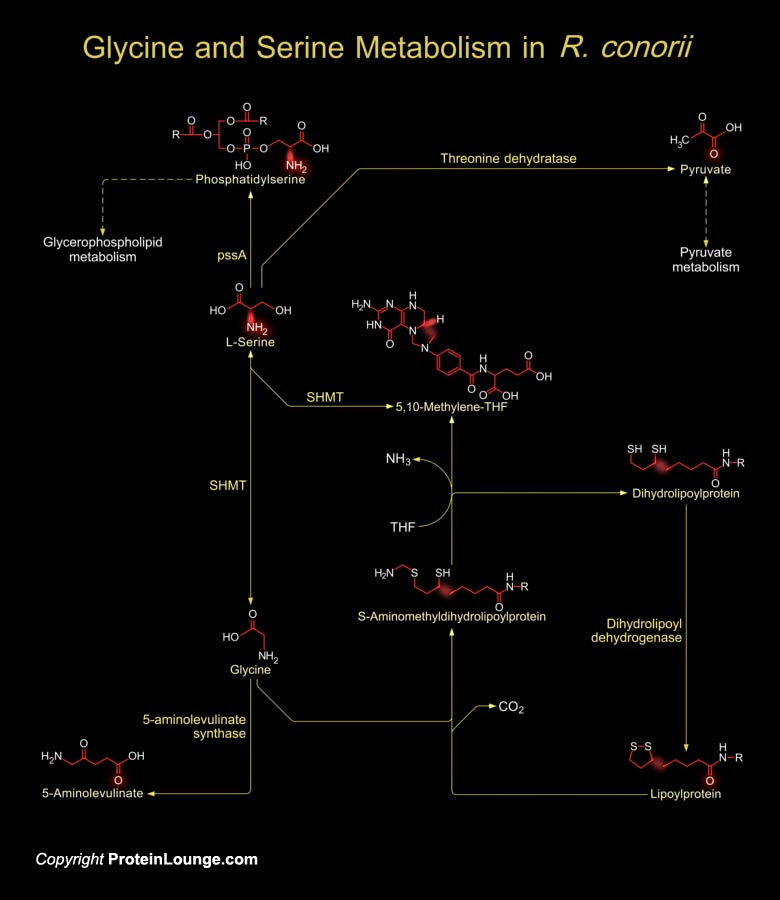
R. conorii (Rickettsia conorii) causes Mediterranean Spotted Fever in humans, which is transmitted by brown dog ticks. Rickettsia are obligate intracellular bacteria normally living in arthropod cells. Rickettsia are true bacteria, small coccobacilli that are normally stained with Giemsa and poorly by the Gram stain. Its cell wall morphology is that of a Gram-negative bacillus. Phylogenetically R. conorii is a member of the Alpha-subgroup of Proteobacteria (Ref.1). The bacterium is closely related to R. prowazekii (Rickettsia prowazekii), which causes Typhus. R. conorii has a relatively small genome, in part because it tends to inactivate its own genes when it use of genes from its host. The R. conorii genome has 1.3 million base pairs and 1,374 genes,[..]
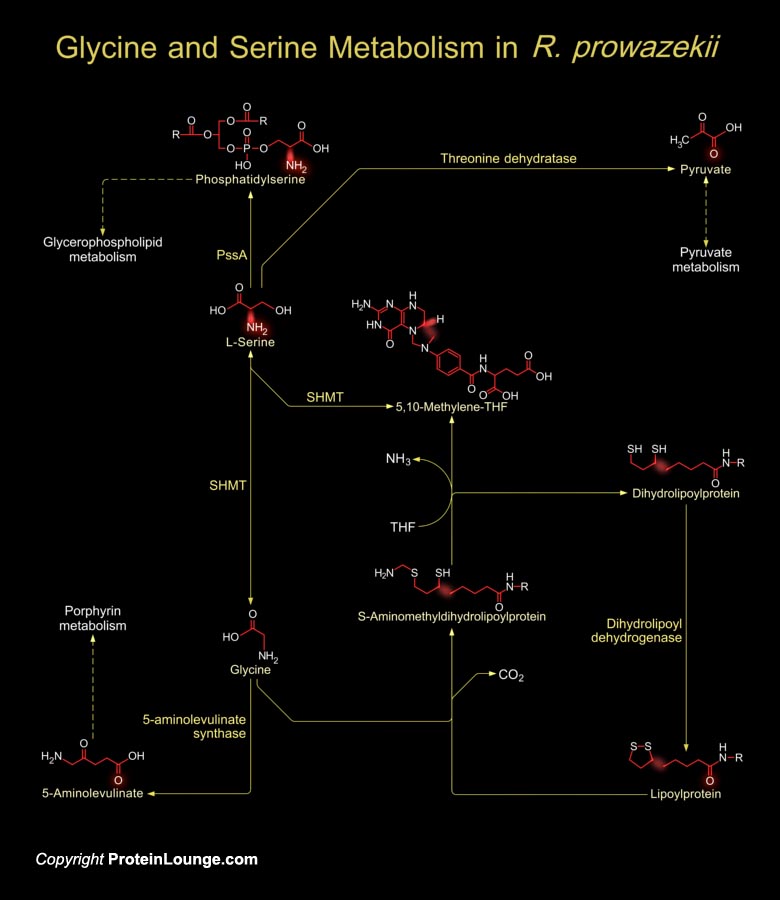
R. prowazekii (Rickettsia prowazekii) is smaller in size than normal bacteria and is an obligately intracellular pathogen that use arthropod vector for the spread of epidemic Typhus fever. However, they are true bacteria, small coccobacilli that are normally stained with Giemsa and poorly by the Gram stain. Its cell wall morphology is that of a Gram-negative bacillus (Ref.1). Phylogenetically a member of the Alpha-subgroup of Proteobacteria, R. prowazekii along with R. typhi (Rickettsia typhi) is considered to be Typhus group Rickettsia. R. prowazekii evolved in close association with its arthropod vector, the human body louse, Pediculus humanus humanus. R. prowazekii do not spread effectively to other cells until their intracellular growth by binary fission[..]
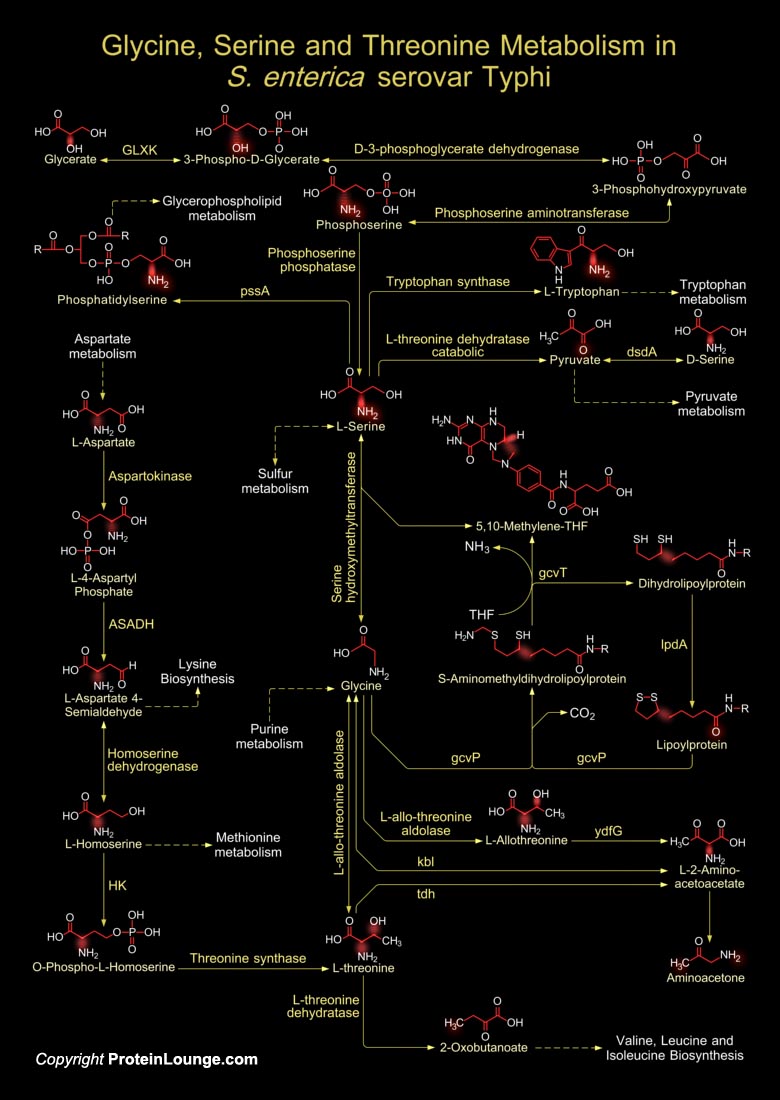
S. typhi (Salmonella typhi) or S. enterica serovar Typhi (Salmonella enterica serovar Typhi) is the aetiological agent of Typhoid fever, a serious invasive bacterial disease of humans. Many S. enterica serovars actively invade the mucosal surface of the intestine but are normally contained in healthy individuals by the local immune defence mechanisms. However, S. typhi has the ability to spread to the deeper tissues of humans, including liver, spleen and bone marrow (Ref.1). The most studied S. enterica serovar Typhi strains are Ty2 and strain CT18. The two strains exhibit differences in prophages, insertion sequences, and island structures. While CT18 carries two plasmids, one conferring multiple drug resistance, Ty2 has no plasmids and is sensitive to antibiotics.[..]

